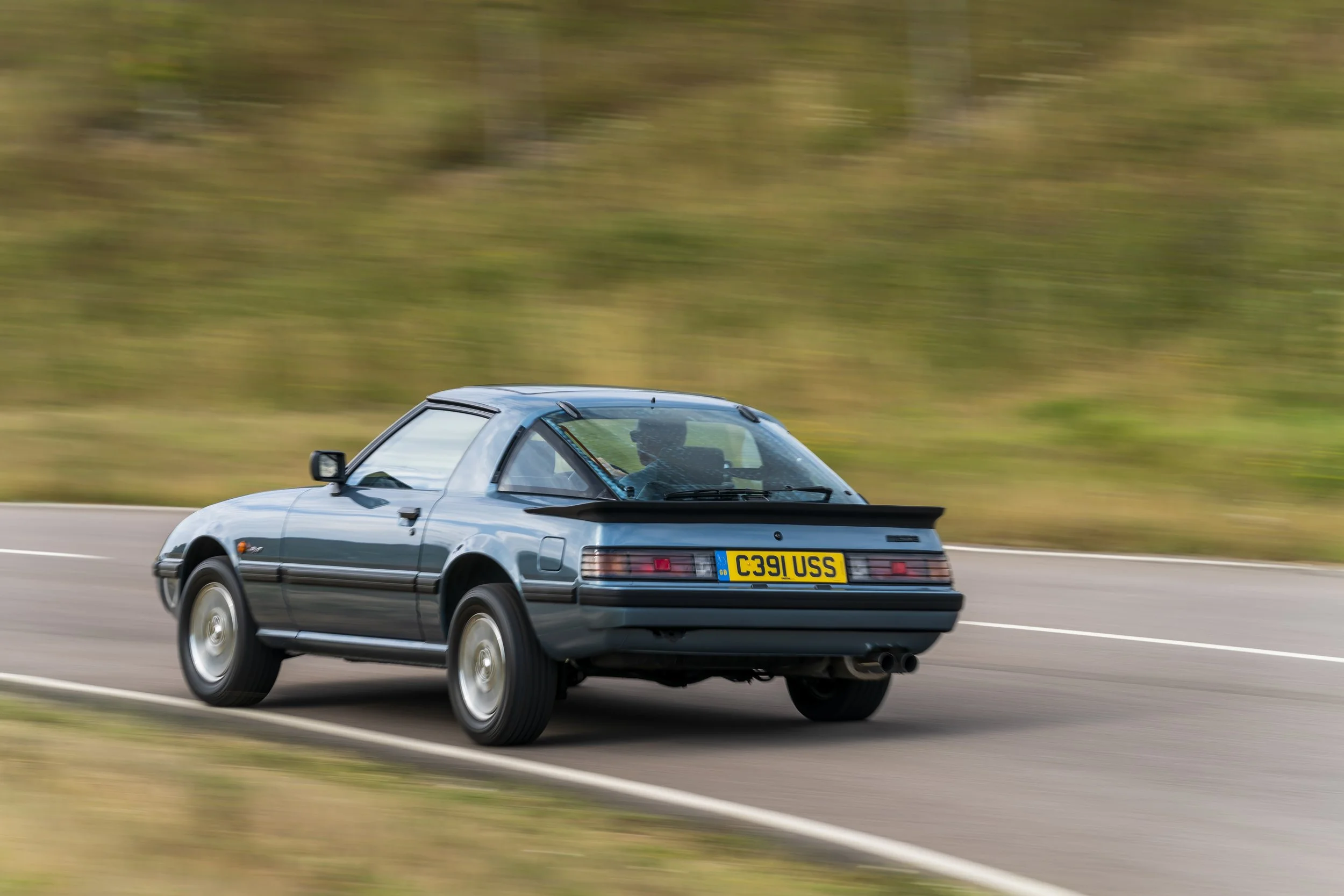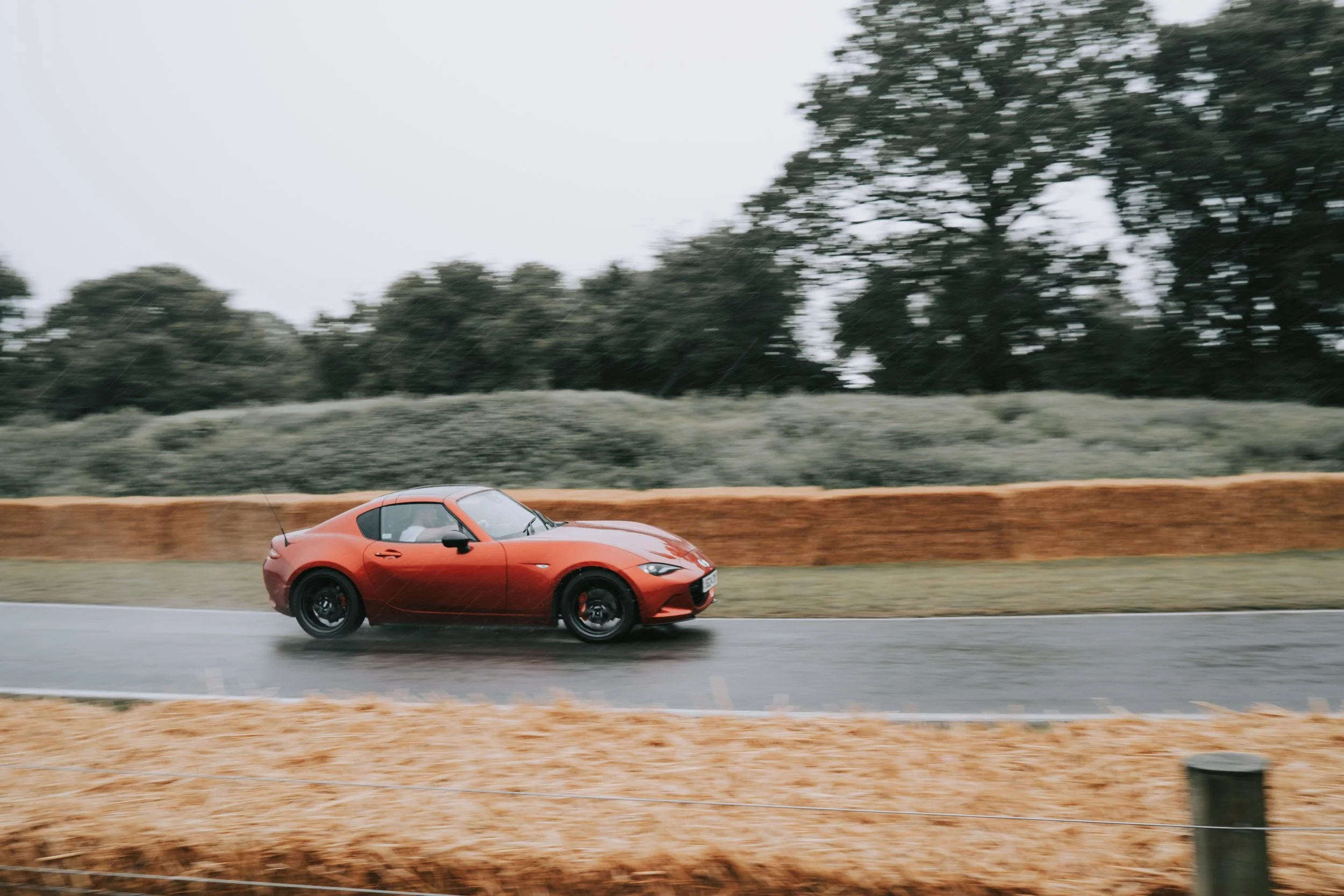The Mazda RX-7 MK1: The Unassuming Sports Car That Became a Cult Classic

The Mazda RX-7 MK1, launched in 1978, was Mazda’s answer to the rising demand for affordable, agile sports cars. Though not initially a standout in the competitive sports car market, it has since evolved into a beloved classic, cherished by enthusiasts for its distinctive rotary engine, sleek styling, and exceptional driving dynamics. Today, the MK1 RX-7 is celebrated as a true icon of Japanese automotive design, embodying Mazda’s innovative spirit and commitment to the unique rotary engine.
A Humble Beginning
When the RX-7 first hit the streets, it didn’t immediately capture the public’s imagination like some of its contemporaries. In an era dominated by European and American muscle, the RX-7 was seen as an outsider—modest in power and unconventional in its approach. Powered by a 1146cc 12A twin-rotor engine, the RX-7 was lighter and nimbler than its competitors. With a rear-wheel-drive layout and a near-perfect weight distribution, it was built for driving pleasure, emphasising balance and control over outright speed.
The MK1 RX-7 was initially met with muted enthusiasm. It wasn’t the fastest car on the block, nor did it boast a luxurious interior. However, it offered something that few other cars could: a pure, unfiltered driving experience that prioritised the connection between car and driver. Over time, as drivers began to appreciate its unique charms, the RX-7’s reputation grew, and it slowly carved out a niche in the automotive world.
Specifications: The Essence of a Lightweight Sports Car
The 1984 Series 3 version of the RX-7, as detailed in the specifications of one of Mazda UK’s Heritage Fleet models, epitomises what made the MK1 special:
Engine: 12A twin-rotor 1146cc, producing 115 hp at 6000 rpm
Performance: 0-62 mph in 8.4 seconds, top speed of 125 mph
Transmission: Five-speed manual gearbox
Dimensions: Length - 4320 mm, Width - 1670 mm, Height - 1260 mm, Wheelbase - 2420 mm
Weight: 1085 kg
Fuel Consumption: Combined 35.8 mpg
Despite its compact size and modest power output, the RX-7’s light weight and agile chassis made it a joy to drive. Its ability to handle corners with poise and precision, combined with the unique rotary engine’s smooth power delivery, set it apart from the more brutish and less refined competition of its time(RX-7-20-Mk1-20C391-20USS).
Driving the RX-7: A Unique Experience
Driving an RX-7 MK1 is a distinctive experience, defined by its rotary engine’s high-revving nature and silky smooth operation. Unlike traditional piston engines, the rotary powerplant delivers power in a linear and consistent manner, with a high-pitched exhaust note that is both unusual and thrilling. The steering is direct, the gearbox is crisp, and the car’s low weight makes it feel alive and responsive, urging the driver to push it through corners with confidence.
The MK1’s cockpit is purpose-built, with a no-nonsense approach that prioritises function over form. Standard features for this model included power windows, electric door mirrors, and a luxury carpet that, while not extravagant, provided a touch of refinement. Mazda’s attention to detail was evident in the ergonomic design of the controls, making the RX-7 feel more like a driver’s car than many of its contemporaries.
A Cult Following: From Obscurity to Icon
While the RX-7 didn’t receive widespread acclaim upon its release, it has since developed a cult following. This transformation from an underappreciated sports car to a sought-after classic can be attributed to several factors. Firstly, the RX-7’s rotary engine—a mechanical marvel that most manufacturers had shied away from—offered something different. Its unique characteristics and quirks created a loyal fanbase dedicated to preserving and celebrating this unconventional technology.
Moreover, the RX-7 became a staple in motorsport, particularly in endurance racing, where it showcased the reliability and performance potential of the rotary engine. Its success on the track translated into greater recognition among enthusiasts, who began to see the RX-7 as a serious contender in the world of performance cars.
Today, the MK1 RX-7 is revered not just for its engineering but also for its timeless design. Its clean, flowing lines, pop-up headlights, and distinctive profile have aged remarkably well, making it a favourite at classic car shows and among collectors. Low production numbers and the challenges associated with maintaining rotary engines have only increased its desirability, ensuring that well-preserved examples are highly prized.
Conclusion
The Mazda RX-7 MK1 may not have been an instant hit, but it has undoubtedly left a lasting legacy. Its rise from a niche sports car to a beloved classic is a testament to Mazda’s commitment to doing things differently. The RX-7’s blend of innovative technology, lightweight design, and engaging driving dynamics make it a standout in the history of Japanese sports cars.
For enthusiasts like yourself, the RX-7 represents more than just a car; it’s a symbol of Mazda’s adventurous spirit and dedication to creating cars that prioritise the joy of driving. As a classic that continues to captivate new generations of drivers, the RX-7 MK1 is proof that true passion and innovation never go out of style.
Founder of this eponymous blog, focusing on men's fashion & lifestyle.







